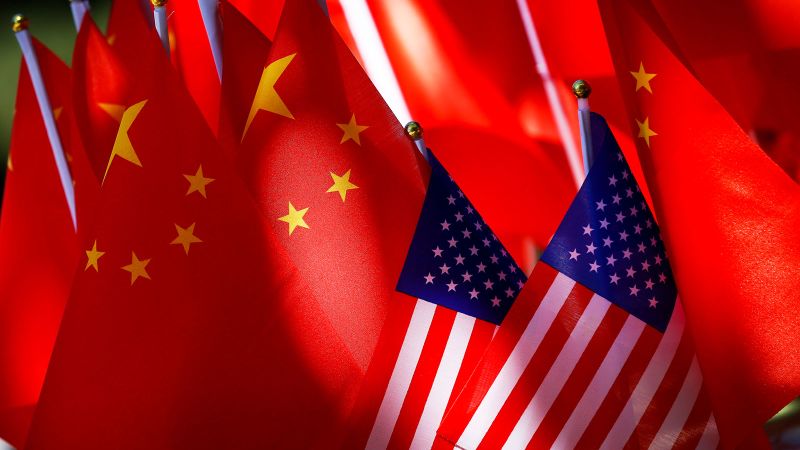The ongoing trade negotiations between the United States and China have reached key milestones, particularly as both nations gather to provide further insights following a series of intense discussions in Geneva, Switzerland. This significant development involves high-profile representatives from the world’s two largest economies, and the outcomes of these discussions are being closely monitored on a global scale.
On Sunday, following intense talks, officials from Washington hinted at substantial progress towards eventually reaching a formal agreement. In contrast, the Chinese delegation emphasized a mutual understanding to begin a more structured negotiation process related to economic and trade matters. At a press conference, the Chinese representatives conveyed that they aimed to finalize the “consultation mechanism” promptly, with the intention of releasing a joint statement soon after.
Investor sentiment has shown a positive response to the prospect of de-escalation in the trade tensions that have characterized recent years, particularly during the tenure of former President Donald Trump. His administration’s tariffs had previously disrupted global markets and raised concerns of a recession. As such, stock markets reacted favorably, with significant increases in the Dow, S&P 500, and NASDAQ indices. The optimism surrounding the negotiations also resonated in Asian markets, which reported higher trading values.
During a press briefing on Sunday, US Treasury Secretary Scott Bessent and Trade Representative Jamieson Greer carefully navigated the specifics of the discussions while announcing that significant progress had indeed been made. Their statements were delivered at the residence of the Swiss representative to the United Nations, which served as the negotiation site.
Bessent expressed optimism, noting that both sides had made substantial strides in addressing the trade disputes that have escalated over recent years. Greer corroborated this sentiment, highlighting an alarming trade deficit of $1.2 trillion and describing it as a “national emergency” necessitating the imposition of tariffs. This acknowledgment underscores the complexities involved in reconciling the interests of both nations while striving to ameliorate trade relations.
As both parties prepare for a Monday morning press conference in Geneva, expectations are high for elaboration on their recent agreements. Although Vice Premier He Lifeng of China, leading the Chinese delegation, refrained from confirming any formal deal, he adopted a significantly more optimistic tone compared to prior statements regarding the bilateral trade conflict. His remarks, communicated via state broadcaster CCTV, conveyed a sense of constructive dialogue that could pave the way for enhanced cooperation.
The focus of the negotiations is not just on immediate resolutions but also on fostering a sustained framework for addressing economic issues moving forward. The desire for a practical approach to problem-solving was echoed by Chinese officials, who emphasized the importance of open communication to expand bilateral cooperation.
A successful deal with China is not just a key objective for President Trump’s administration but also a necessary step for stabilizing the global economy, which has been susceptible to the ramifications of rising prices and potential economic repercussions stemming from protracted trade tensions. Following the first day of negotiations, President Trump remarked on social media that the talks had facilitated a “total reset,” reflecting the cooperative spirit that characterized the discussions.
The backdrop of the negotiations reveals the contentious nature of US-China relations, notably illustrated by a tit-for-tat tariff escalation initiated by Trump. With the imposition of steep tariffs by both nations, clarity and resolution are more urgent than ever. Currently, uncertainty remains concerning the reception of any firm agreement on tariff reductions, as the White House’s communications were scant on details apart from the positive reflections from Bessent and Greer.
Moving forward, the Chinese negotiators indicated their commitment to a systematic approach concerning subsequent discussions. Vice Premier He Lifeng will take on a leadership role, co-heading the negotiation process alongside US counterparts, a strategy designed to ensure ongoing dialogue on trade and economic matters.
The mention of timing in releasing joint statements highlights a cultural nuance, with Chinese officials equating the timing of important announcements to the quality of dishes served—a metaphor reflecting both confidence and anticipation. However, observable impacts of the trade war have already been felt; US port authorities recently reported a complete halt of cargo movements from China toward major West Coast ports, a situation unprecedented since the onset of the Covid-19 pandemic.
Should changes to the US tariff structure on Chinese goods occur, it is anticipated that any adjustments would likely not fall below the established 10% baseline rate, maintaining a status quo that has characterized recent US trade policies. Furthermore, the implications of recent UK trade agreements—where a similar 10% tariff was instituted—add another layer of complexity to the ongoing negotiations.
In conclusion, the upcoming joint statement not only promises to clarify mutual understandings between the United States and China but carries the weight of influencing both economies in a hopeful move toward trade normalization. As the world anticipates these developments, the stakes for consumers, businesses, and global markets remain exceptionally high.



